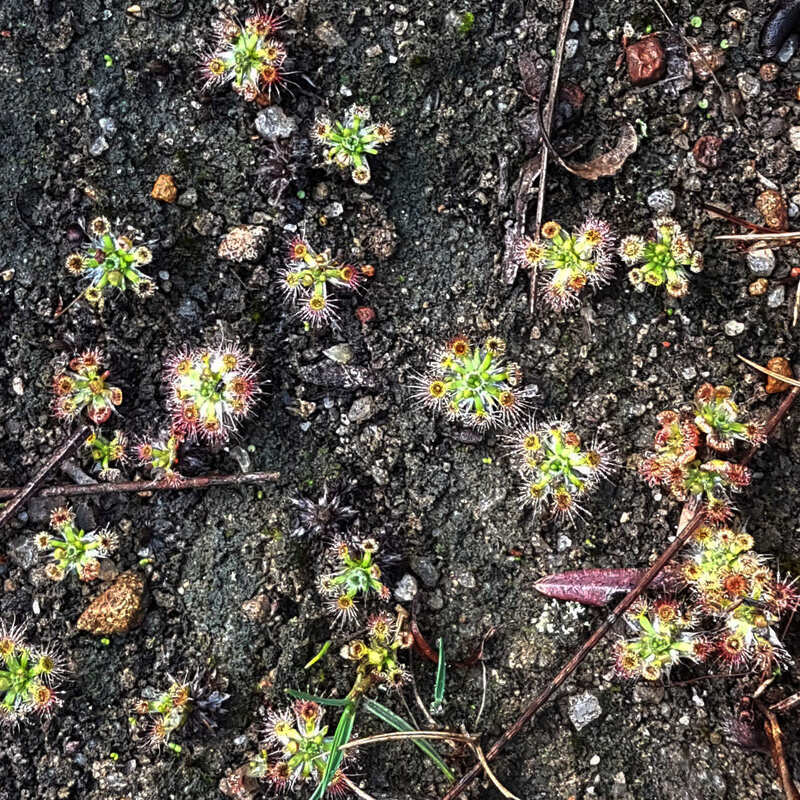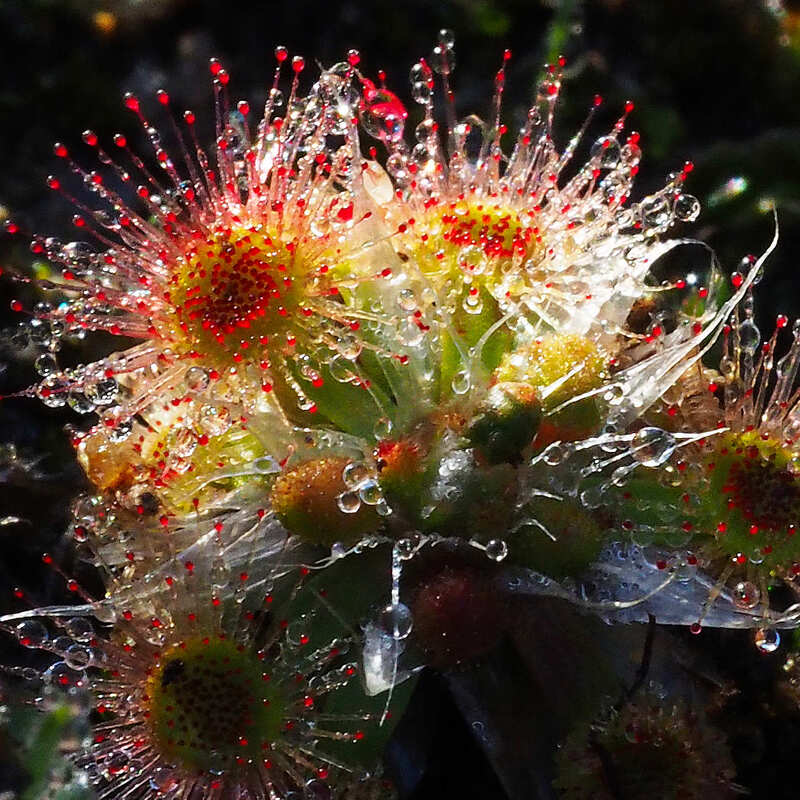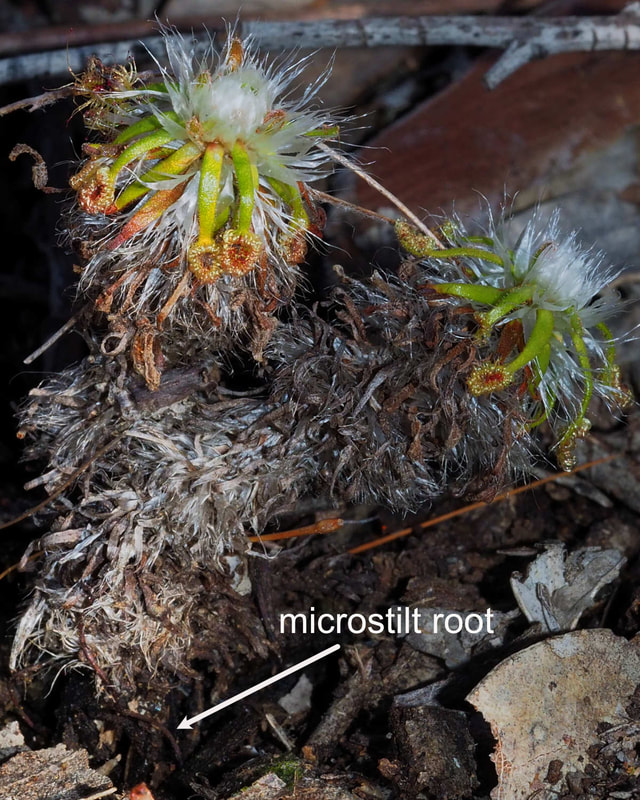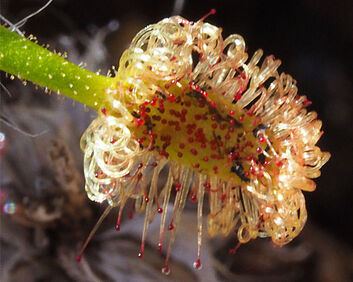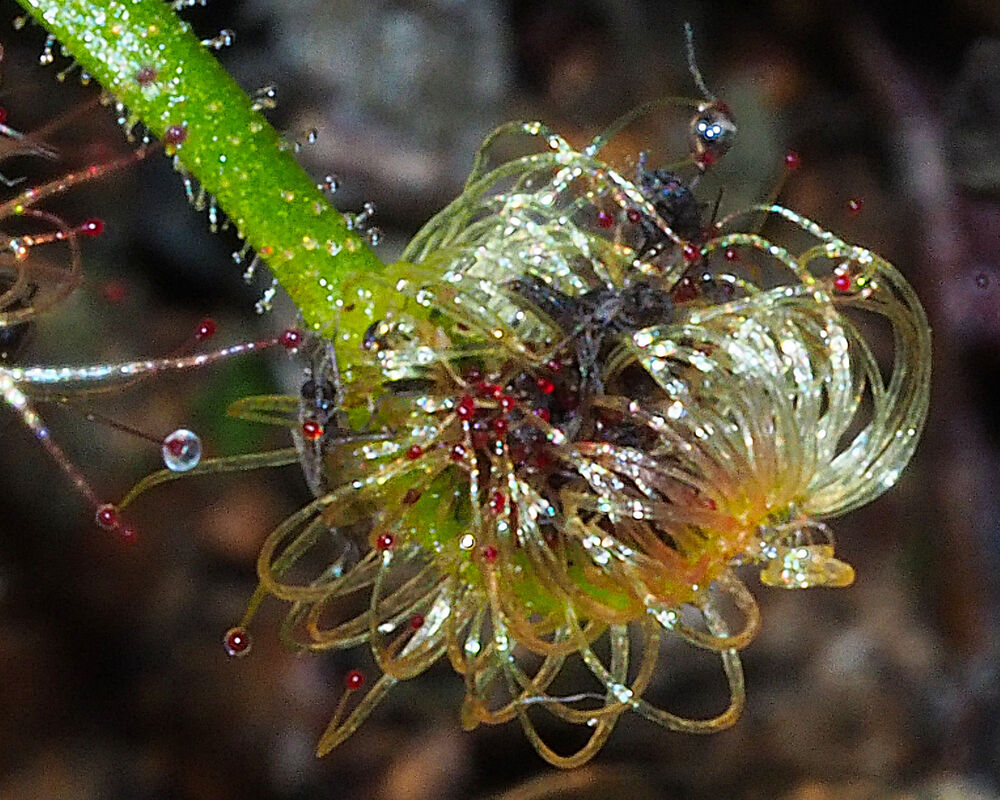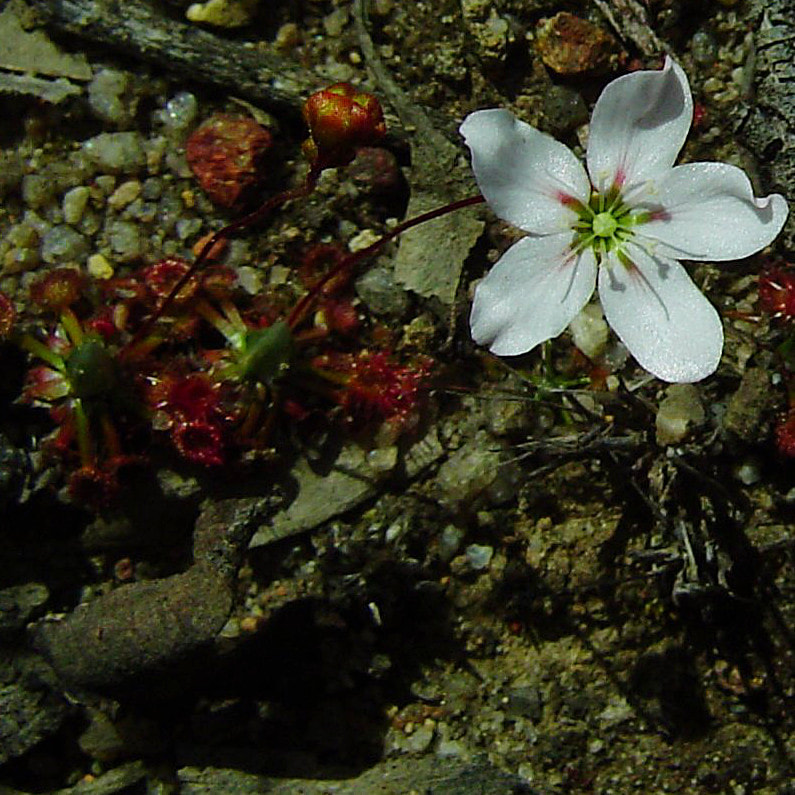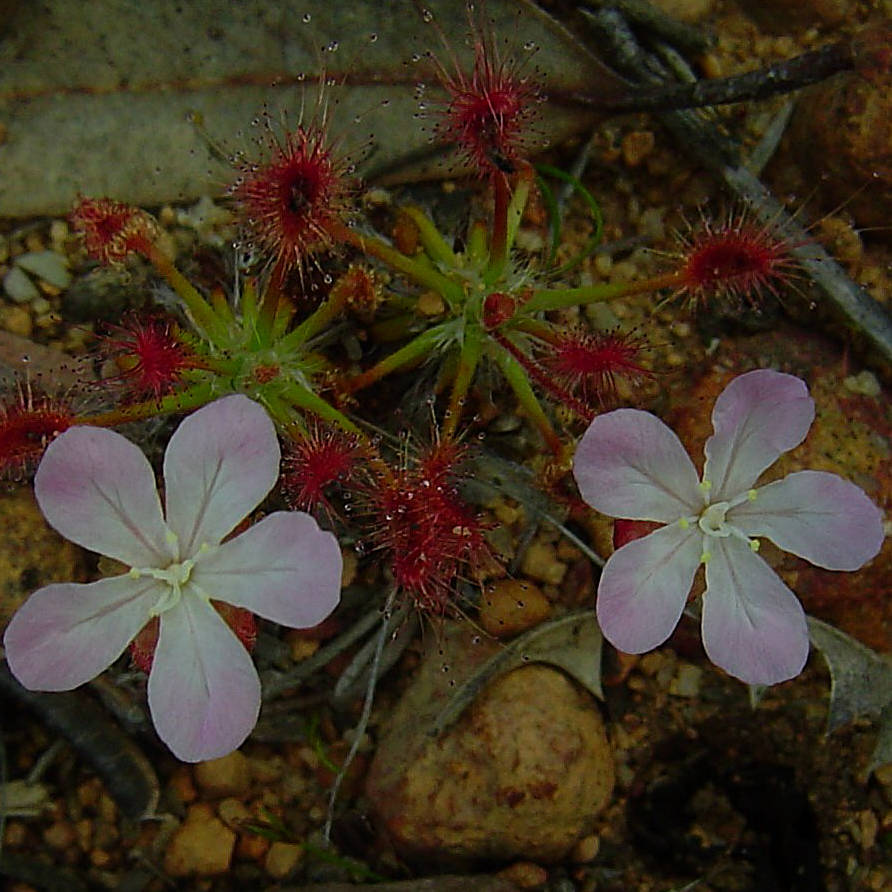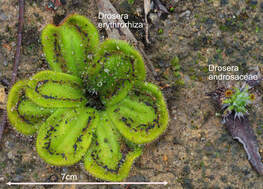 Left: Red ink sundew Right: Cone sundew
Left: Red ink sundew Right: Cone sundew July is a time for appreciating small plants. Sundews are actively growing and harvesting insects for their nutrients. I love seeing the sun behind them lighting up drops of sticky insect-trapping ‘glue’ and dew in the early morning.
If you know where to look, there are carpets of tiny pygmy sundews. With one exception they only occur in Australia.
Pygmy sundews are explosive plants!!
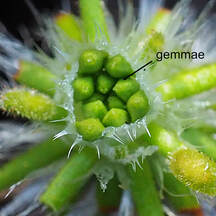 Gemmae encased in white stipules
Gemmae encased in white stipules
The first two are perennials that have cluster bomb type (gemmae) vegetative reproduction. Gemmae are produced early in the season after leaves have formed
Gemmae are modified leaves which detach, root, and form new plants. They are produced from the rosette center, and look like a bundle of little grapes or flat scales. They become so densely packed that the old leaf stipules are pushed away from the rosette centre. This acts like the cocking of a trigger---when a single raindrop strikes the mass of gemmae, the disturbance makes the stipules flex back to their normal positions in an explosive burst, thus shooting the gemmae as far as a few meters!
They can rapidly populate bare areas of soil when the surface is wet.
These are amazingly tough plants as this area is wet when it rains, but dry and hard for much of the year.
Exceptionally dry weather last summer killed many but you can still see plants dotted in protected spots
They are very successful ant catchers. Lots of the plants had many tendrils curled, or slowly curling around captured ants
It is explosive in another way! Its tendrils close so quickly that it might just be the fastest moving plant in the world. (check out the video on this link)
Tendrils move faster than the eye can see: a couple of hundredths of a second. "And an ant or prey will walk on that gland and the gland will actually flick it into the centre of the leaf. There is no escape."
Amazing for a plant that is no more than 6cm tall. Minute, deadly and beautiful
